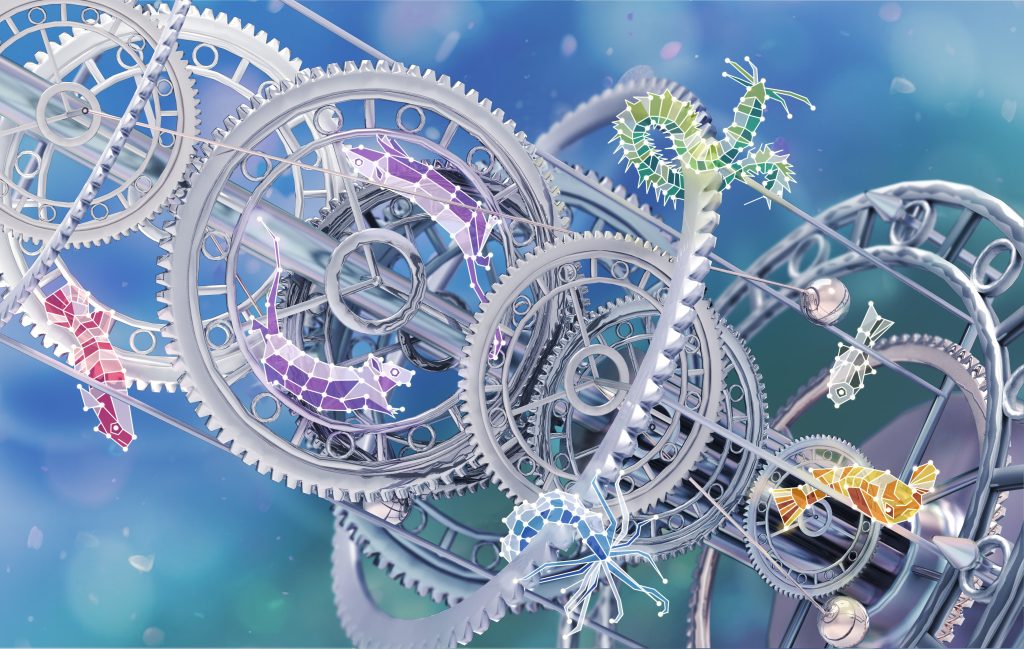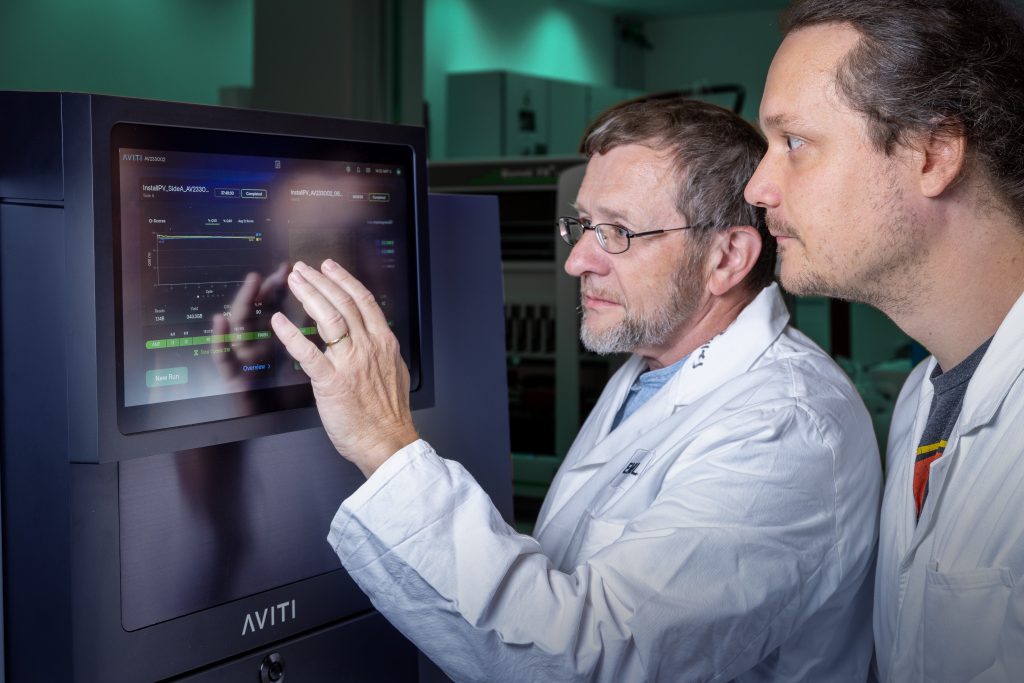Read the latest Issue
EMBL group leader Miki Ebisuya receives ERC Consolidator Grant
Miki Ebisuya, group leader at EMBL Barcelona, has been awarded a prestigious ERC Consolidator Grant funded under the European Union’s Horizon 2020 research and innovation programme. Over the next five years, the grant of €2 million will allow her to continue and extend her group’s research on the biochemical mechanisms that determine how fast mammalian embryos develop.

Miki Ebisuya established her research group at EMBL Barcelona in 2018 to study the biochemical processes governing the development of embryos. In particular, she wants to understand why different species go through developmental processes at different speeds.
In their most recent study, Ebisuya and her colleagues observed that biochemical reactions in developing mouse embryonic stem cells (ESCs) and human induced pluripotent stem cells (iPSCs) run at different speeds. The rhythmic signal of the segmentation clock – a genetic network that governs the sequential formation of the body pattern in embryos – beats more slowly in humans than in mice.
The biological concept behind this phenomenon is called ‘developmental allochrony’, and Ebisuya’s ERC grant will allow her to investigate it further, and in greater detail than before.
Previously, the scientists studied a gene named HES7, which is part of the segmentation clock. “We found that in mouse cells both the HES7 messenger RNA gets processed and the HES7 protein gets degraded much faster than in human cells. But we don’t know yet why this is the case – the molecular mechanisms behind developmental allochrony remain unknown,” explains Ebisuya.
This is where the ERC Consolidator Grant comes in. Endowed with €2 million for a period of five years, Ebisuya and her group will be able to scrutinise the entire genome for genes that show different biochemical reaction speeds, similar to HES7. The goal is for this approach to help the scientists to identify shared characteristics among these genes, and lead them towards the molecular mechanisms. The team has already identified two cellular processes that might be involved and will test these hypotheses in parallel.
Finally, Ebisuya and her group will be able to address the important question of how universal their observations are. “So far, we have looked at mouse ESCs and human iPSCs that were developing into a specific cell type, called presomitic mesoderm. In future, we aim to study gastruloids – 3D aggregates of stem cells that develop an embryo-like organisation. We can obtain gastruloids from ESCs or iPSCs of diverse mammalian species,” explains Ebisuya.
Using gastruloids, they will be able to investigate which cell types exhibit differences in biochemical reaction speeds. The approach will also shed light on the question of how widespread developmental allochrony is among mammals.
“The ERC Consolidator Grant allows us to perform a much more detailed analysis of developmental allochrony. Additional group members will be working on the topic, and we will be able to expand our experimental toolkit,” adds Ebisuya.
The European Research Council is Europe’s main research funding organisation. It awards grants to researchers at various levels of experience across all scientific disciplines. ERC Consolidator Grants support scientists who have been performing independent research for several years, and whose work has made substantial contributions to their respective field.
Miki Ebisuya, jefa de grupo en el EMBL Barcelona, recibe una ERC Consolidator Grant
Miki Ebisuya, jefa de grupo en el EMBL Barcelona, ha sido galardonada con una prestigiosa ERC Consolidator Grant, financiada por el programa de investigación e innovación “Horizon 2020” de la Unión Europea. Durante los próximos cinco años, la financiación, de 2 millones de euros, le permitirá continuar y ampliar la investigación de su grupo sobre los mecanismos bioquímicos que determinan la rapidez con la que se desarrollan los embriones de mamíferos.
Miki Ebisuya estableció su grupo de investigación en el EMBL Barcelona en 2018 para estudiar los procesos bioquímicos que rigen el desarrollo de embriones. En particular, quiere comprender por qué especies diferentes pasan a través de sus procesos de desarrollo a velocidades diferentes.
En su estudio más reciente, Ebisuya y sus colaboradores han observado que las reacciones bioquímicas en el desarrollo de células madre embrionarias (ESC) de ratón y células madre pluripotentes inducidas (iPSC) humanas progresan a diferentes velocidades. La señal rítmica del reloj de segmentación, una red de genes que gobierna la formación secuencial del patrón corporal en embriones, late más lentamente en humanos que en ratones.
El concepto biológico detrás de este fenómeno se llama “alocronía del desarrollo”, y la subvención del ERC permitirá a Ebisuya estudiarlo más a fondo y con mayor detalle que antes.
Los científicos ya habían estudiado un gen llamado HES7, que forma parte del reloj de segmentación. “Descubrimos que en las células de ratón, tanto el procesamiento del ARN mensajero de HES7 como la degradación la proteína HES7 son mucho más rápidos que en las células humanas. Pero aún no sabemos por qué es así: los mecanismos moleculares detrás de la alocronía del desarrollo siguen siendo desconocidos”, explica Ebisuya.
Aquí es donde entra en juego la ERC Consolidator Grant. Gracias a los 2 millones de euros otorgados durante un período de cinco años, Ebisuya y su grupo podrán analizar todo el genoma en busca de genes que muestren diferentes velocidades de reacción bioquímica, similares a HES7. Este enfoque ayudará a los científicos a identificar características compartidas entre estos genes, y los guiará hacia los mecanismos moleculares. El equipo ya ha identificado dos procesos celulares que podrían estar involucrados y probará estas hipótesis en paralelo.
Finalmente, Ebisuya y su grupo podrán abordar la importante cuestión de cuán universales son sus observaciones. “Hasta ahora, hemos analizado las ESC de ratón y las iPSC humanas que se estaban convirtiendo en un tipo de célula específico, llamado mesodermo presomítico. En el futuro, nuestro objetivo es estudiar los gastruloides, agregados tridimensionales de células madre que desarrollan una organización similar a la de un embrión. Podemos obtener gastruloides de ESC o iPSC de diversas especies de mamíferos”, explica Ebisuya.
Usando gastruloides, podrán investigar qué tipos de células muestran diferencias en las velocidades de reacción bioquímica. Este enfoque también permitirá entender cuán extendida es la alocronía del desarrollo entre los mamíferos.
“La ERC Consolidator nos permite realizar un análisis mucho más detallado de la alocronía del desarrollo. Habrá más miembros del grupo que podrán trabajar en el tema y podremos ampliar nuestro conjunto de herramientas experimentales”, añade Ebisuya.
El Consejo Europeo de Investigación es la principal organización europea de financiación de la investigación. Otorga subvenciones a investigadores de diversos niveles de experiencia en todas las disciplinas científicas. Las ERC Consolidator Grants apoyan a los científicos que han estado realizando investigaciones independientes durante varios años y cuyo trabajo ha hecho contribuciones sustanciales en sus respectivos campos.







